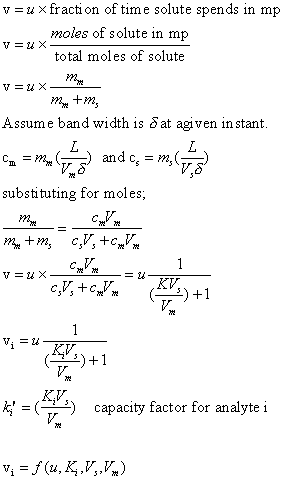
Velocity of migration of analytes:
This is a simple derivation of analyte migration velocity for a typical chromatographic system. Use with lecture presentation.
Let the linear velocity of the m.p. = u
Assume instantaneous equilibration and the number of moles of the analyte in m.p and s.p. respectively are mm and ms.
Noting that if no retention the analyte will move at u and the retention is due to partitioning into the s.p.
The velocity of an analyte, v, will then be,

where, Vs, Vm, K are volume of the stationary phase,
volume of the mobile phase, partition coefficient of the analyte and L
is the length of the column. The subscript i refers to the analyte i. For
a given chromatographic system run under a constant set of physical conditions
(which includes the materials of sp and mp), factors governing analyte migration
velocity are the same for all analytes except Ki. Therefore each
analyte will acquire a unique migration velocity depending on its partition
coefficient.